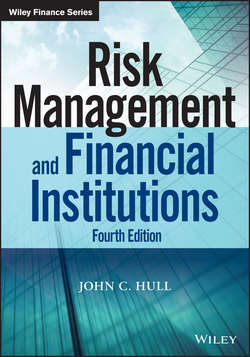Читать книгу Risk Management and Financial Institutions - Hull John C. - Страница 40
На сайте Литреса книга снята с продажи.
PART One
Financial Institutions and Their Trading
CHAPTER 3
Insurance Companies and Pension Plans
3.9 CAPITAL REQUIREMENTS
ОглавлениеThe balance sheets for life insurance and property-casualty insurance companies are different because the risks taken and reserves that must be set aside for future payouts are different.
Life Insurance Companies
Table 3.3 shows an abbreviated balance sheet for a life insurance company. Most of the life insurance company's investments are in corporate bonds. The insurance company tries to match the maturity of its assets with the maturity of liabilities. However, it takes on credit risk because the default rate on the bonds may be higher than expected.
TABLE 3.3 Abbreviated Balance Sheet for Life Insurance Company
Unlike a bank, an insurance company has exposure on the liability side of the balance sheet as well as on the asset side. The policy reserves (80 % of assets in this case) are estimates (usually conservative) of actuaries for the present value of payouts on the policies that have been written. The estimates may prove to be low if the holders of life insurance policies die earlier than expected or the holders of annuity contracts live longer than expected. The 10 % equity on the balance sheet includes the original equity contributed and retained earnings and provides a cushion. If payouts are greater than loss reserves by an amount equal to 5 % of assets, equity will decline, but the life insurance company will survive.
Property-Casualty Insurance Companies
Table 3.4 shows an abbreviated balance sheet for a property-casualty life insurance company. A key difference between Table 3.3 and Table 3.4 is that the equity in Table 3.4 is much higher. This reflects the differences in the risks taken by the two sorts of insurance companies. The payouts for a property-casualty company are much less easy to predict than those for a life insurance company. Who knows when a hurricane will hit Miami or how large payouts will be for the next asbestos-like liability problem? The unearned premiums item on the liability side represents premiums that have been received, but apply to future time periods. If a policyholder pays $2,500 for house insurance on June 30 of a year, only $1,250 has been earned by December 31 of the year. The investments in Table 3.4 consist largely of liquid bonds with shorter maturities than the bonds in Table 3.3.
TABLE 3.4 Abbreviated Balance Sheet for Property-Casualty Insurance Company
